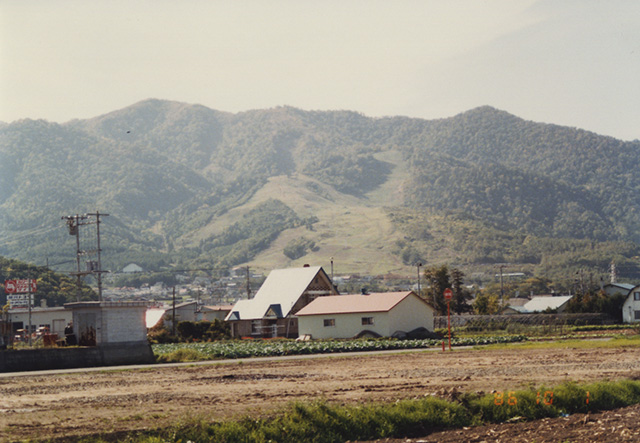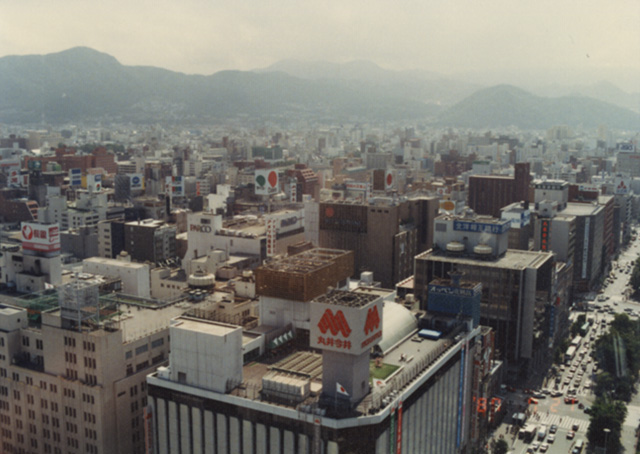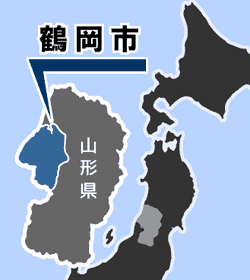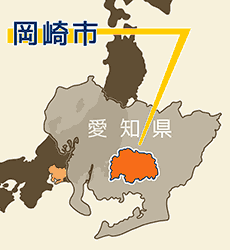Database of Hokkaido Survey

Distant view of Furano. |

Distant view of Sapporo. |
The National Institute for Japanese Language and Linguistics carried out surveys on the first to third generations of migrants to Hokkaido in 1958-1960, as part of its linguistic research activities focusing on the standardization of dialects, to find out about the standardization of Hokkaido dialects (into a local standard language).
Furthermore, the institute conducted a second survey in 1986-1987 to reveal how language usage could change in local communities depending on differences in the characteristics of social structures.
The results of the longitudinal surveys conducted in Furano City and Sapporo City are provided in the Database of Hokkaido Survey, which is available on this page.
The Database of Hokkaido Survey is licensed under a Creative Commons Attribution 4.0 International License.

Furthermore, the institute conducted a second survey in 1986-1987 to reveal how language usage could change in local communities depending on differences in the characteristics of social structures.
The results of the longitudinal surveys conducted in Furano City and Sapporo City are provided in the Database of Hokkaido Survey, which is available on this page.
The Database of Hokkaido Survey is licensed under a Creative Commons Attribution 4.0 International License.

Database of Hokkaido Survey Ver. 0.5 (Interim Version)
Data about the items common to the first and second surveys from the responses of 106 respondents surveyed in the panel surveys in the first survey (1959) and second survey (1986) in Furano City is published. Database of Hokkaido Survey Ver. 0.5 (Interim Version, published on March 15, 2022)
Database of Hokkaido Survey Ver. 0.5 (Interim Version, published on March 15, 2022)
What is the Hokkaido Survey?
Hokkaido is a local community that has been formed through migration from different parts of Japan. A series of surveys were carried out from 1958 through 1960 to unravel the mechanisms behind the standardization of dialects into a local standard language (Standard Hokkaido Dialect) and nationwide language standardization, as well as the relationship between the former and the latter.The survey results reveal that influences of local dialects spoken by first-generation migrants to Hokkaido, which still remained among second-generation residents, almost disappeared among third-generation residents, who began to speak Standard Hokkaido Dialect.
Meanwhile, there was also a trend of Hokkaido dialects coming closer to Standard Japanese, and a survey was conducted in Furano Town (current Furano City) in 1959 to elucidate this trend, followed by another survey for the same purpose in 1986-1987. The second survey was carried out not only in the rural city of Furano (1986) but also in the urban city of Sapporo (1987).
The informants at the survey spots were selected by random sampling. As those surveyed in 1959 were surveyed again in the Furano survey, the results show changes in the responses of the same individuals.
As part of the Hokkaido Survey, a wide variety of surveys were conducted as shown below, in addition to the Furano and Sapporo surveys. For details of these surveys, consult the publications below.
First Survey (1958-1960)
Survey on the First, Second and Third Generations, Survey on the Third Generation, Furano Survey,
Yoshino/Urausu/Toyokoro Survey, High School Survey, Scrutiny Survey
Second Survey (1986-1987)
Furano Survey,Sapporo Survey, High School Survey, Accent Example Survey on Three-generational Households, Survey on Single Migrants Living in Sapporo City
Main publications
Click on the following links to download the PDF files of the publications: 国立国語研究所(1997)『北海道における共通語化と言語生活の実態(中間報告)』
国立国語研究所(1997)『北海道における共通語化と言語生活の実態(中間報告)』
 国立国語研究所(1990)『北海道における共通語使用意識―富良野・札幌言語調査から―』(報告101)
国立国語研究所(1990)『北海道における共通語使用意識―富良野・札幌言語調査から―』(報告101)
 国立国語研究所(1965)『共通語化の過程―北海道における親子三代のことば―』(報告27)
国立国語研究所(1965)『共通語化の過程―北海道における親子三代のことば―』(報告27)
 | ||

|

|

|
